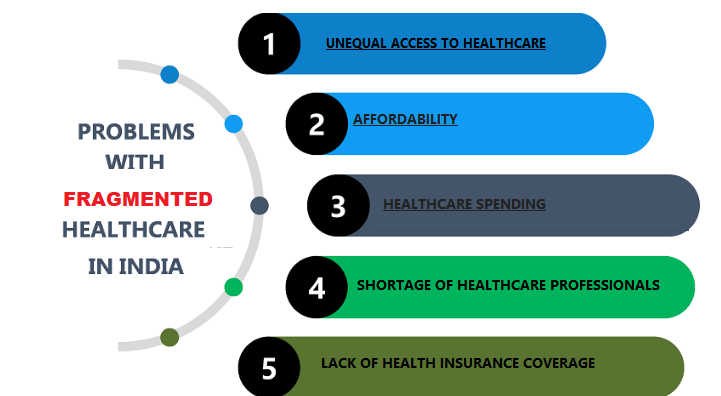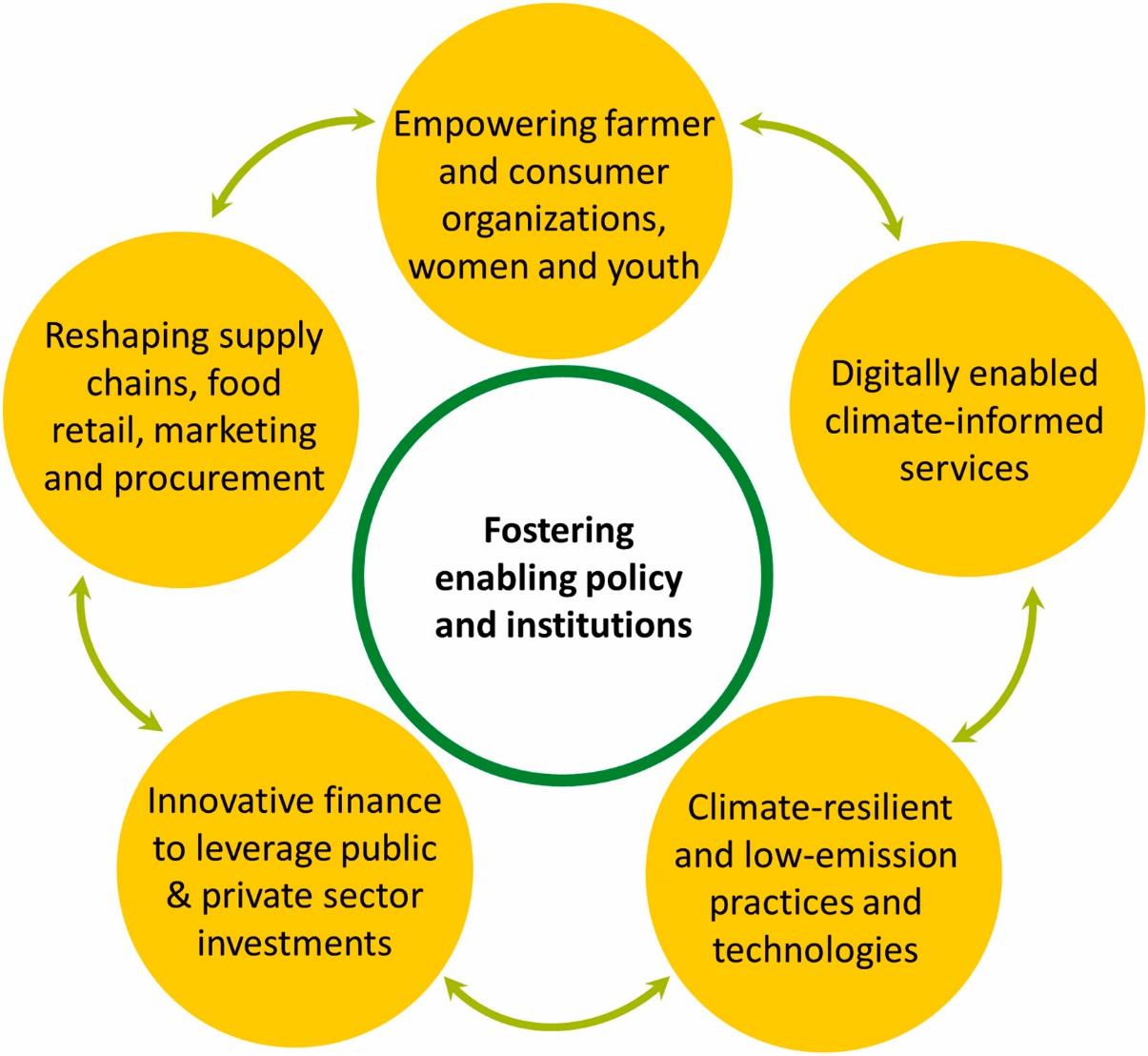Keeping Indian Health Care's Access, Innovation, and Affordability in Check
(05-Jun-2024)
Keeping Indian Health Care's Access, Innovation, and Affordability in Check

Finding the right balance between service delivery and financial considerations has become more and more important as one navigates the complicated Indian health care system. More than ever, equitable and long-lasting health-care policies are required due to the widening gaps in health and the unequal access to care. Deliberations over the uniformity of fees for healthcare services go beyond basic administrative duties; they play a crucial role in determining the provision, image, and availability of healthcare services throughout India. India can enhance its methods to health-care cost management by studying how other countries have addressed comparable issues that are influenced by different cultural, economic, and institutional factors.
Private Hospitals: Creativity and Availability
In India, private hospitals serve as both hubs for innovation and as places to receive specialized care. Leading examples are hospitals accredited by the National Accreditation Board for Hospitals (NABH) and Joint Commission International (JCI), which have incorporated state-of-the-art technologies that greatly improve patient outcomes, particularly during intricate procedures. By making significant investments in state-of-the-art infrastructure and cutting-edge technologies, these institutions are able to smoothly integrate telemedicine and remote treatment, increasing patient trust and expanding access to healthcare services.
Private hospitals are at the forefront of medical innovation thanks to these technical developments, which allow them to provide specialized and excellent care. By adopting these technologies, these organizations raise the bar for patient care and show how the private sector can contribute to improving the quality of healthcare. But this also calls into question accessibility and cost for the larger community, highlighting the necessity for well-balanced health-care policies that aim for inclusivity without sacrificing quality.
Price ceilings, excellence, and creativity
The appeal of affordability becomes a major factor in the Supreme Court of India's deliberations over the standardization of medical procedure charges in the public and private sectors. On the other hand, imposing universal price caps may compromise the standard of healthcare. According to a research in the Health Care Management Review, hospitals who are having to deal with pricing limitations on their operations are reporting a 15% rise in patient dissatisfaction. These restrictions may also impede the advancement of novel therapies and technological advancements, especially in fields that necessitate significant funding, like robotic surgery and cancer research. Value-based pricing, in which payments are made based on health outcomes rather than service volume, is one potential remedy.
Value-based pricing encourages hospitals to enhance patient outcomes by highlighting the significance of quality over quantity. This strategy could ensure that healthcare stays inexpensive while promoting innovation. But these pricing strategies have wider economic ramifications than just the health care industry. Although rate standardization when done correctly can reduce health-care inequities, care must be taken to prevent providers' financial stability from being jeopardized. Economists propose dynamic pricing models that provide a more equitable solution by adjusting according to patient financial status and the intricacy of the medical condition. For example, Thailand's tiered pricing structure, which takes into account the income levels of patients and medical necessity, effectively strikes a balance between cost and care and could be a model for India's heterogeneous economic environment.
Regulatory and Legal Difficulties
Significant legislative reform is necessary in India to manage health care expenditures effectively. The objectives of rate standardization and high-quality care can be supported by modifying strategies to take into account regional demographic and economic circumstances. States such as Tamil Nadu and Rajasthan have called attention to deficiencies in the existing rate fixation rules and have argued for strong legal frameworks to effectively handle these problems. Legislative changes need to address these gaps to create a more equitable and efficient health-care system.
To facilitate the use of technology in healthcare, the legal environment must also change. New laws will be required to guarantee that the advances in medical diagnostics and care coordination are applied fairly and successfully as technology continues to develop these fields. For instance, telemedicine programs in Karnataka have resulted in a 40% decrease in hospital visits, illustrating the potential of technology to improve access to and affordability of healthcare, particularly in rural areas. Using the full potential of technological innovations in health care will require flexible and forward-thinking regulatory frameworks.
Technology's Place in Healthcare
Technology is revolutionizing the health care industry by using artificial intelligence to speed up and improve diagnosis, and by using electronic health records to enhance care coordination. Initiatives in telemedicine have demonstrated a great deal of promise for increasing the affordability and accessibility of medical care. Karnataka's telemedicine initiatives, for example, have resulted in a 40% decrease in hospital visits, demonstrating how technology can relieve the strain on healthcare facilities while providing prompt care right to patients' homes.
Furthermore, wearable technology and mobile health apps are crucial for monitoring chronic illnesses outside of hospitals, which lowers costs and improves patient outcomes. Making sure these technologies are accessible to all parts of the population is crucial as India advances these technologies. By making investments in digital literacy and infrastructure to enable wider Internet access, more individuals would be able to take advantage of these developments, establishing India as a global leader in innovative health care. To ensure that the advantages of technology are not limited to metropolitan regions but are available to underserved and rural communities, the task is to bridge the digital divide.
Data's Significance in Developing Policies
Decisions on health care policy should depend more and more on data-driven insights in the big data era of today. More complex rate-setting frameworks can be informed by data analytics, which can offer useful information on patient outcomes, treatment efficacy, and cost-effectiveness. For instance, rate fixation's long-term effects on health care advances might be predicted using predictive analytics, enabling regulators to modify laws to promote both innovation and accessibility.
Healthcare access, innovation, and cost must all be balanced; this is a delicate but crucial task. A pilot program in a few districts might be used to assess how rate caps affect innovation and quality in healthcare. Furthermore, public-private collaborations to integrate state-of-the-art technologies into public hospitals and government subsidies for research and development in private hospitals can guarantee universal access to cutting-edge medical treatments.
In summary
India wants to lead the world in health care, so it's critical to create an atmosphere that encourages innovation while guaranteeing that everyone has access to high-quality care. Every person's health must come first, in line with the goal stated by Dr. Vinod K. Paul, Member, NITI Aayog: "Affordable healthcare is not just a necessity but a priority for our nation, and we are committed to innovating and leveraging technology to bring down healthcare costs for every citizen." Building a sustainable and accessible health care system in India requires a complicated balancing act that manages health care expenditures while preserving quality and encouraging innovation.
Making Food Systems Climate-Resilient
(05-Jun-2024)
Making Food Systems Climate-Resilient

The world's food systems urgently need to alter in response to the effects of climate change on food production. Improving climate resilience, maintaining sustainability, and providing food for future generations all depend on this, especially in underdeveloped nations where malnutrition is widespread and agriculture is mostly rain-fed. Strategies and procedures that work are crucial.
Changing Food Systems in the Face of Climate Change
Using Sustainable Agricultural Techniques: A crucial approach to creating food systems that are resilient to climate change is the implementation of sustainable farming methods. Crop rotation, polycultures, and cover crops are some of the methods used in this strategy to enhance soil health and lessen its vulnerability to pests and diseases. Agroecology promotes biodiversity and ecosystem services by integrating ecological concepts into agricultural methods. The three major goals of conservation agriculture are to diversity plant species, minimize soil disturbance, and maintain a continuous soil cover. A study found that conservation agriculture strengthens soil structure, increases water retention, and increases resistance to harsh weather events. A sustainable option for climate resilience, organic farming promotes soil fertility and ecosystem health while eschewing synthetic inputs and emphasizing natural processes.
diversification Livestock and Crops: Increasing resilience also requires diversification livestock and crops. Monocultures are particularly vulnerable to changes in pest and disease patterns brought about by climate change. These hazards are lessened by diversified farming methods, which use a range of crops and livestock varieties. Research indicates that crop diversification can increase overall farm output and reduce the probability of a crop failing completely. It is imperative to integrate animal types and crop kinds that are climate adaptable. These breeds and cultivars are more resilient to harsh weather, including as heat waves, droughts, and floods. According to a study conducted in Sub-Saharan Africa, diverse farming systems contribute to production maintenance in the face of changing climate circumstances, guaranteeing a steady supply of food.
Effective Water Management: Climate resilience depends on effective water management. Reducing waste in irrigation can be achieved by using effective techniques like drip irrigation, which provides water straight to plant roots. rainfall harvesting is another useful technique that collects and stores rainfall for usage in arid periods.
Using Climate-Smart Technologies: Improving resilience and upgrading farming methods require the use of climate-smart technologies. Farmers can increase productivity, make well-informed decisions, and make the most use of their resources thanks to precision agriculture, remote sensing, and data analytics. Farmers may better adjust to changing conditions with the use of digital tools and mobile applications that offer real-time weather forecasts, pest alerts, and best practice advice. With precision agriculture, farmers can apply inputs like water, fertilizer, and pesticides more effectively, lowering waste and increasing yields. Precision agriculture uses GPS and sensors to monitor crop health, soil conditions, and weather patterns. Technologies for remote sensing, like satellite photography, make it easier to monitor wide areas, spot stress signals early, and minimize potential losses.
Increasing Economic and Social Resilience
Building Community Resilience: Increasing the social and economic resilience of farming communities and vulnerable populations is a crucial part of building climate resilience in food systems. This entails establishing social safety nets and insurance programs for farmers, enhancing market access and value chains, and granting access to climate information and early warning systems. Building climate resilience requires supporting inclusive economic growth and empowering local communities.
Acknowledging and Formalizing Community Knowledge: Local communities are necessary for the regeneration or afforestation of lands because they are able to supervise and administer adaptive management techniques. It is crucial to acknowledge and codify community knowledge systems and forest management initiatives. In many states, farmer-managed natural regeneration (FMNR) systems—in which nearby people safeguard and oversee spontaneously regenerating trees—have shown to have substantial positive effects on the economy and ecology.
Novel Approaches to Food Systems
Innovation is essential to changing food systems for climate resilience in addition to conventional adaptation techniques. In order to solve the difficulties of food security in a changing climate, research and development are essential in fields including climate-resilient crop types, biofortification, sustainable aquaculture, and alternative protein sources. Technological developments in data analytics, blockchain, and digital agriculture also present fresh chances to boost food supply networks' resilience and transparency.
Efficient Frameworks for Policies and Governance
Developing food systems in a way that is climate resilient requires strong governance and policy frameworks. It is possible to adopt measures like incorporating climate change considerations into agricultural laws, encouraging sustainable land use planning, providing subsidies and incentives to encourage climate-smart practices, and boosting global collaboration and knowledge exchange. The execution of comprehensive and inclusive plans necessitates cooperation between governments, commercial industry, civil society, and research institutes.

Possibilities and Difficulties
There are still a number of issues to be resolved in order to address climate resilience in food systems. Smallholder farmers' restricted access to capital and technology, stakeholders' incapacity and lack of awareness, conflicting land-use agendas, and gaps in national and international policy are some examples of this. But these difficulties also offer chances for creativity, teamwork, and funding for sustainable food systems and agriculture.
In summary
Creating a climate-resilient food chain is a difficult but necessary endeavor in light of climate change. Adaptive farming methods, technical advancement, economic and social empowerment, biodiversity preservation, and efficient government are all necessary. We can create resilient food systems that guarantee food security, safeguard natural resources, and advance sustainable development for future generations by tackling these issues and taking advantage of possibilities.
Future Forests: The Road to Net-Zero Emissions in India
(05-Jun-2024)
Future Forests: The Road to Net-Zero Emissions in India

By using efficient forest management techniques, India may considerably advance its goal of net-zero emissions and lessen the effects of climate change in a sustainable and economical manner. India is experiencing a massive shift to renewable energy in order to achieve these targets. By 2030, it hopes to cut its GDP's carbon intensity by 45% and obtain 50% of its electricity from non-fossil fuel sources.
Present-Day Energy Situation
India, one of the developing nations with the quickest rate of growth, will keep using traditional fossil fuels like coal. Coal-produced energy made up around 77.01 percent of all energy generated in FY23, according to the Ministry of Statistics and Programme Implementation's Energy Statistics 2024 report. By 2026, coal-fired power is predicted to cover 68 percent of the demand for energy. Therefore, India needs to explore a variety of alternate options in order to hasten its progress towards the net-zero aim by 2070.
The Value of Carbon Sinks on Land
Forests' role: Studies show that terrestrial carbon sinks, such as forests, provide a potent and successful way to lower atmospheric carbon dioxide, the main greenhouse gas responsible for climate change. The 2024 World Environment Day will highlight accelerated land restoration, drought resilience, and combating desertification, reflecting the growing worldwide acknowledgment of the necessity for forest conservation.
Existing Forest Cover and Deforestation: Nevertheless, India lost 2.33 million hectares of tree cover between 2001 and 2023, which led to a 6% decrease in tree cover and 1.20 Gt of CO2 emissions. The incoming administration possesses the chance to reroute this trajectory and expedite India's advancement towards a net-zero future. India has to grow its forest cover by 12 percent over the next ten years in order to meet its climate goal. How can the new administration guarantee the implementation of efficient plans for the ecological and social repair, maintenance, and preservation of the country's forest cover?
Redefining India's Forests
The Existing Definition and Its Drawbacks First and foremost, it is critical to reinterpret what an Indian "forest" is. Regardless of land use, ownership, or tree species, the Forest Survey of India officially defines forests as any land patch with a tree canopy density of more than 10% and an area more than one hectare. This definition is based on data from remote sensing and satellite photography. Nevertheless, this approach is unable to distinguish between natural forests and plantations. Therefore, any area with tree cover—be it urban parks, bamboo, coffee, orchards—is categorized as a "forest."
The value of native forests cannot be overstated. Unlike plantations, native forests are complex ecosystems made up of thirty to forty diverse species of trees that have evolved over millions of years in response to unique regional biophysical characteristics. They are the best at absorbing carbon dioxide. As a result, a forest cannot be defined by just the canopy of trees.
Repercussions of Deforestation
Effects on Population and Land
India has seen severe deforestation over the last 20 years, which has led to the degradation of more than 30% of its land and the loss of 2.33 million hectares of forest cover.
Over 25% of the nation's population depends on trees for their livelihoods, making this deforestation detrimental to them. Deforestation and soil degradation have far-reaching effects on biodiversity, water quality, agricultural output, and eventually over 600 million people in India.
Forest Land Diversion
India has approved over 88,903 hectares in the previous five years—more than the combined areas of Mumbai and Kolkata—due to the fast diversion of forestland for uses other than forests. Construction of roads has taken up the most space—more than 19,424 hectares—followed by mining, transmission lines, irrigation projects, and defense projects.
The Compensatory Afforestation Programme in India permits project clearances in return for monetary compensation that is utilized for afforestation on non-forest land, with the understanding that forests can be replaced elsewhere. The percentage of forest diversion proposals that the government has turned down since 2015 is less than 1%.
Current Reforestation Efforts Are Ineffective
India's afforestation policy now concentrates on large-scale monoculture plantations of non-native, commercial species like eucalyptus, acacia, and teak to make up for the loss of "forests." The richness, ecological significance, and longevity of wild forests are absent from these plantations. They can't sequester much carbon, and burning the wood releases a lot of carbon.
The ISFR 2021 report shows that despite attempts, this initiative has been mostly ineffectual, as seen by the reduction of 1,582 sq km in moderately dense forests and the increase of 2,621 sq km in open forest areas.
Constructing a Sturdy Policy Framework
Reducing Deforestation and Improving Natural Values
India needs to create a strong framework of policies for managing its forests so that deforestation is reduced and ecological and biodiversity benefits are increased. Large-scale use of the Restoration Opportunities Assessment Methodology (ROAM) framework may enable an in-depth examination of socioeconomic, legal, and spatial data, leading to the best possible forest restoration actions.
Sufficient Execution and Observation
Putting in place strict institutional procedures to ensure that funds are used, implemented, and monitored in an efficient manner. Strong oversight is required, as evidenced by the several cases of CAMPA fund misuse and insufficient governmental monitoring that have recently come to light.
Making Use of Emerging Technologies
For example, Treevia's SmartForest remote forest monitoring system tracks the growth of Brazil's forests in real time using wireless electronic sensors.
Furthermore, geo-tagging technology can be an effective tool for mapping forest landscapes efficiently and for online recording, monitoring, and leak prevention.
Acknowledging and Systematizing Local Knowledge
Finally, local communities must be involved in the regeneration or afforesting of lands because they are the ones who can oversee and administer adaptive management techniques. It is crucial to acknowledge and codify community knowledge systems and forest management initiatives.
In many states, farmer-managed natural regeneration (FMNR) systems—in which nearby people safeguard and oversee spontaneously regenerating trees—have shown to have substantial positive effects on the economy and ecology. Large-scale formalization and institutionalization of these activities are required.
Models such as the "Wadi" initiative of the National Bank for Agriculture and Rural Development (NABARD) and the "re-greening of village commons project" of the Foundation for Ecological Security have shown to be successful in India.
Take note of global norms and behaviors. Bhutan's government has a climate-smart forest economy, and forests are an integral element of the country's precious cultural heritage.
Case Study: Model Telangana
- In response to environmental concerns, the Telangana government is modifying the municipal and panchayat statutes.
- establishing a Telangana Haritha Nidhi, or Green Fund, to be used for tree planting and other projects.
- Making local community participation required at all stages of forest-based planning.
In summary
For India to meet its climate change and sustainable development targets, it must implement efficient forest management plans. India can considerably advance its net-zero emissions target and lessen the effects of climate change by redefining forests, reducing deforestation, improving native forest restoration, and involving local communities. By putting these plans into practice, the nation will create a resilient and sustainable future by preserving natural balance, enhancing biodiversity, and sustaining the livelihoods of millions of people.



